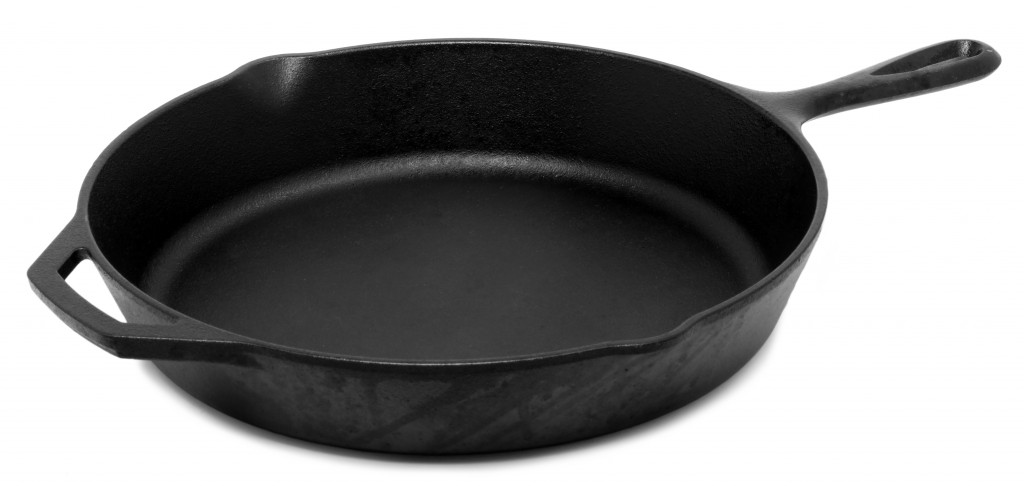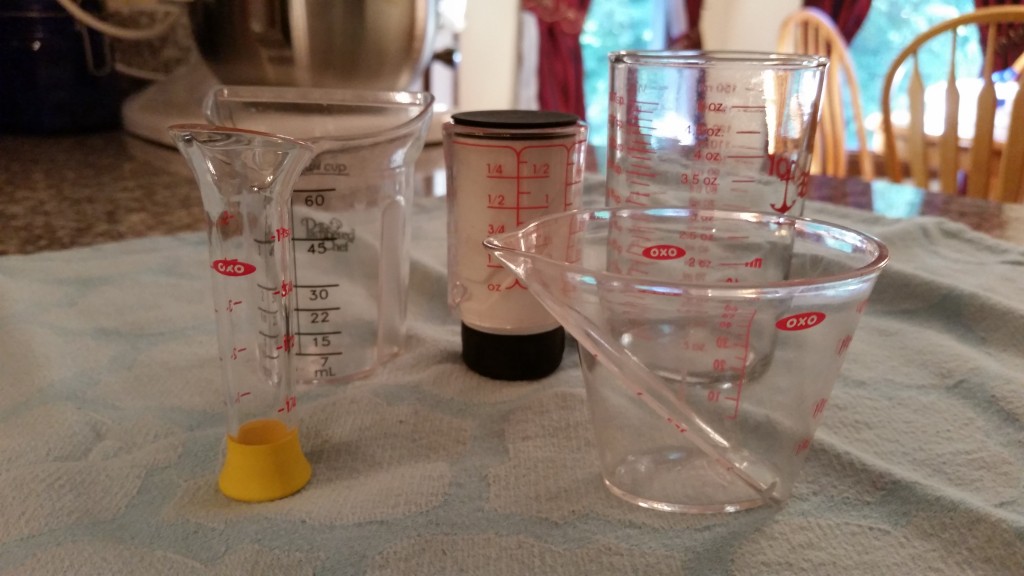
Seasoning a Piece of Cast Iron
Cast iron cookware has a lot going for it. It’s awesome for cooking with high heat, can go in the oven, can be relatively inexpensive and can last forever if you take care of it. Preparing a new piece of cast iron for its first use is called seasoning. Here’s how you do it:
- Heat your oven to 350°.
- Soak your new pan in hot soapy water for 5 minutes, then rinse and air dry it. (You sometimes have to re-season old cast iron cookware; you can skip this step if it’s been seasoned before.) This first washing will remove any wax that was applied to the pan before it was shipped to the store.
- Rub a thin, even coating of vegetable oil or melted shortening (NOT butter) over the entire pan with a paper towel. This includes the outside, bottom & handle…ALL over the pan.
- Put a sheet pan or a disposable aluminum pan on the lower rack of your oven. Put your freshly oiled cast iron pan upside down on the upper rack of the oven. (The upside down part is to prevent the oil from pooling in the bottom of the pan.)
- Bake the pan in the oven at 350° for an hour, then shut off the oven. Allow the pan to stay in the oven until it’s cool. I suggest leaving in in there overnight.
- When the pan is cool, remove it from the oven and wipe off the excess oil with a clean paper towel and store it in a dry place.
Congratulations! You’ve just taken the first step in creating a non-stick coating on your cast iron pan! You can season a pan as many times as you want; it’ll just get more stick-resistant the more often you do it. Without this coating, your pan can rust, which is a bit icky but not catastrophic. (Scrub off the rust with steel wool, then re-season.)
Cleaning cast iron requires a few slightly unorthodox steps:
- Rinse it with hot water immediately after you’re done cooking in it. DON’T soak it overnight and DON’T put it in the dishwasher!
- If you need to remove stuck-on gunk, scrub with a mild abrasive (like coarse salt mixed with a little vegetable oil) and a paper towel. This allows you to clean the pan and work on maintaining the seasoning at the same time. When the pan seems clean enough, dump out the salt, wipe out any remaining particles with a clean paper towel and store the pan. (I often keep mine in the oven.)
- Most cooks who own a well-seasoned cast iron pan rarely use soap to clean it. Dishwashing detergent is designed to break down the oil you’ve so carefully baked into the surface of your pan. If you’re worried about food-borne cooties, remember that all microbes are dead at 212°. Your pan will be well past that a couple of minutes after heating it on medium heat.
So enjoy your cast iron cookware! The more you use it and properly care for it, the better your cooking will be!

Figuring Out Measurements
If you’re going to cook, you’re going to have to measure things. And if you’re measuring things, you’ve probably already discovered there are a baffling array of terms, abbreviations and equivalents. If you’re American, you’re not aided by a measuring system that has the same term (ounces) for liquid volume and weight. Here’s a table that might help you out:
|
1 tablespoon (tbsp or T) = |
3 teaspoons (tsp or t) |
|
1/16 cup = |
1 tablespoon |
|
1/8 cup = |
2 tablespoons |
|
1/6 cup = |
2 tablespoons + 2 teaspoons |
|
1/4 cup = |
4 tablespoons |
|
1/3 cup = |
5 tablespoons + 1 teaspoon |
|
3/8 cup = |
6 tablespoons |
|
1/2 cup = |
8 tablespoons |
|
2/3 cup = |
10 tablespoons + 2 teaspoons |
|
3/4 cup = |
12 tablespoons |
|
1 cup = |
16 tablespoons |
|
1 cup = |
48 teaspoons |
|
1 cup = |
8 fluid ounces (fl oz) |
|
1/2 cup = |
4 fluid ounces |
|
1/4 cup = |
2 fluid ounces |
|
2 cups = |
1 pint (pt) |
|
4 cups = |
1 quart (qt) |
|
2 pints = |
1 quart |
|
4 quarts = |
1 gallon (gal) |
|
16 cups = |
1 gallon |
The only thing I am lacking is a dutch oven!
Looking good.